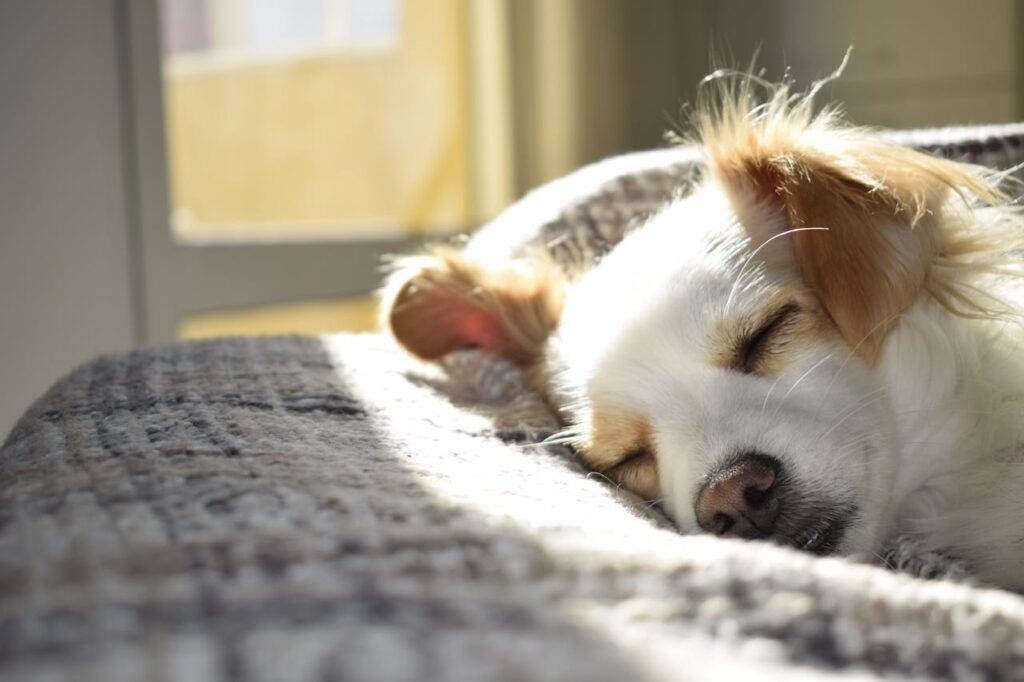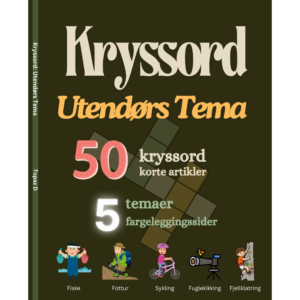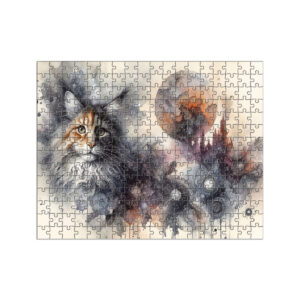
Explore & Play
Discover interesting topics and solve the accompanying crossword puzzle.
Dog Crossword | Various Dog Breeds
Table of Contents
Welcome to our blog post! We invite you to start by trying out the Dog crossword, which will test your knowledge of various breeds. If you’re not familiar with the topic, feel free to read the article first to gather insights, and then return to tackle the crossword. Enjoy exploring the world of dog breeds!
Dog Crossword
You can either fill in the crossword puzzle directly on this page or click the button in the bottom right corner to print it for free.

Choosing the Right Dog Breed for Your Lifestyle
Choosing the right dog breed can be a daunting task, given the vast array of options available to potential pet owners. Each breed comes with its unique set of characteristics, making it essential to select one that aligns with your lifestyle. In this article, we will explore various dog breeds, helping you understand their needs and how they might fit into your home. Plus, you can test your knowledge with our engaging dog breed crossword puzzle included at the end!
1. Understanding Your Lifestyle
Before diving into specific breeds, it’s crucial to assess your lifestyle and what you’re looking for in a canine companion. Do you have a busy schedule, or do you spend most of your time at home? Are you an active individual who enjoys outdoor activities, or do you prefer a more laid-back lifestyle? Answering these questions will set the stage for your breed selection.
Consider factors like your living situation, family dynamics, and time available for training and exercise. For example, families with children might prioritize breeds known for their friendly temperament, while individuals with busy schedules may prefer lower-maintenance dogs.
2. Active Lifestyles
If you lead an active lifestyle, you may want a dog breed that can keep up with your energy levels. Many breeds thrive on physical activity and mental stimulation, making them perfect companions for outdoor adventures.
2.1 Energetic Breeds
Some breeds stand out for their high energy and agility. For instance, the Border Collie is renowned for its intelligence and enthusiasm, often excelling in dog sports. The German Shepherd is another excellent choice, known for its versatility and strength. These breeds require regular exercise to stay happy and healthy, so they are ideal for active individuals or families.
2.2 Ideal Activities for Active Breeds
Engaging in outdoor activities, such as hiking, running, and agility training, is essential for these breeds. Incorporating exercise into your daily routine can help maintain their physical and mental health, fostering a strong bond between you and your dog.
3. Family-Friendly Dogs
Finding the perfect dog breed for a family is a significant decision that requires careful consideration. A good family dog should be friendly, patient, and tolerant, especially if young children are involved. Families need a breed that can handle the excitement and energy of kids while remaining gentle and protective.
3.1 Best Breeds for Families
When looking for a family-friendly breed, several options come highly recommended. The Golden Retriever is a classic choice, known for its gentle and loyal nature. Golden Retrievers are easy to train, making them ideal companions for families who may be welcoming their first dog. They are patient with children, energetic enough to join in playtime, and always eager to please, which makes them a popular pick.
The Labrador Retriever is another great breed for families. Labs are incredibly friendly and adaptable, making them perfect for homes with kids and other pets. Their playful and outgoing personalities, combined with their intelligence, help them form strong bonds with children. Additionally, they thrive on physical activity, making them perfect for families who enjoy outdoor activities like hiking or playing fetch in the park.
The Beagle is also an excellent family-friendly option, especially for those who prefer a smaller dog. Beagles are affectionate, curious, and playful, and they get along well with children and other pets. Their manageable size makes them suitable for smaller homes or apartments, and their friendly demeanor creates a joyful atmosphere for families.
3.2 Tips for Introducing a Dog to Children
Introducing a new dog into a family setting requires patience and guidance to ensure a harmonious relationship between the pet and children. It’s important to teach children how to interact respectfully with the dog. Start by showing them how to pet the dog gently and avoid pulling its ears or tail. Encourage children to use a calm voice and to approach the dog slowly.
Supervised interactions are essential, especially in the early days when the dog is still adjusting to its new environment. Use treats and positive reinforcement to reward both the dog and the children for behaving appropriately. Allowing the dog to explore and interact with the family on its terms will help build trust and create a comfortable space for everyone involved. With the right approach, a dog can become a child’s best friend and a cherished family member.
4. Small and Toy Breeds
For individuals or families with limited space or a preference for smaller pets, small and toy breeds are ideal companions. These dogs are known for their adaptability, making them suitable for apartment living or smaller homes. Despite their size, these breeds often possess big personalities and can form deep, affectionate bonds with their owners.
4.1 Popular Toy Breeds
There are several small and toy breeds that stand out for their charm and versatility. The Papillon, for instance, is a delightful breed known for its butterfly-like ears and lively nature. Despite its petite size, the Papillon is an energetic and intelligent dog, excelling in obedience training and dog sports. It’s an ideal companion for those who seek a small dog that is both active and affectionate.
Another beloved small breed is the Shiba Inu, a Japanese breed known for its independence and fox-like appearance. Shiba Inus are incredibly loyal and clean, often compared to cats in their grooming habits. Although they are small, they have a spirited personality and require a bit of training to ensure they behave well. This breed suits owners who appreciate a bit of independence in their canine companion.
The Chihuahua is perhaps one of the most recognizable toy breeds, famous for its tiny size and big attitude. Despite their small stature, Chihuahuas are fiercely loyal and make excellent watchdogs. They are well-suited for apartment living and can adapt to a variety of lifestyles. Chihuahuas thrive when they receive plenty of attention and affection, making them an excellent choice for owners who prefer a close, one-on-one bond with their dog.
4.2 Care Considerations for Small Breeds
Caring for small and toy breeds involves some specific considerations. Although these dogs typically need less exercise than larger breeds, they still benefit from daily walks and playtime to keep them healthy and prevent boredom. Interactive toys and games can also provide the mental stimulation these breeds need, especially for those with higher intelligence like the Papillon.
Grooming is another important aspect when caring for small breeds. Breeds like the Papillon and Shiba Inu have specific coat needs that require regular brushing to keep their fur looking healthy and clean. Even short-haired breeds, such as the Chihuahua, need occasional grooming and skin care to prevent dryness or irritation. Regular vet check-ups are also important to monitor for breed-specific health issues, which can sometimes affect smaller dogs more frequently.
In addition, small breeds often have delicate frames, so owners should be cautious when handling them, especially around children. Teaching children to be gentle and avoid rough play is crucial to prevent injury. Small breeds are best suited for families or individuals who can provide a safe and secure environment, where these little dogs can thrive without fear of being hurt.
5. Low-Maintenance Dogs
For individuals with busy lifestyles or those who prefer a pet that requires minimal grooming and care, low-maintenance dog breeds are an excellent choice. These breeds tend to be adaptable, independent, and often need less attention compared to high-energy or high-grooming breeds. This makes them suitable for people who want a loyal companion without the intensive upkeep.
5.1 Breeds That Require Minimal Grooming
When it comes to grooming, some breeds stand out for their low-maintenance coats. The Dachshund, for example, has a short, sleek coat that requires minimal brushing. This breed is not prone to heavy shedding, making it a great option for those who want a pet that won’t leave fur around the house. Dachshunds are also compact and don’t need as much space, making them suitable for apartments or smaller homes.
The Boston Terrier is another breed known for its low-maintenance grooming needs. With its short, smooth coat, this breed only needs occasional brushing and regular baths to stay clean. Boston Terriers are also a good fit for those who may not have the time for long grooming sessions. Despite their minimal grooming needs, they still have lively personalities and form strong bonds with their owners.
For a more unique option, the Basenji is a great choice. Often referred to as the “barkless dog” because of its quiet nature, the Basenji has a short, low-shedding coat that requires very little grooming. This breed is known for its cat-like grooming habits, often keeping itself clean. Basenjis are also independent, making them ideal for owners who prefer a dog that is both low-maintenance and doesn’t require constant attention.
5.2 Low-Energy Breeds for Busy Lifestyles
Aside from grooming, some owners may prioritize finding a dog with lower energy levels that doesn’t require frequent exercise. The Bulldog is a perfect example of a low-energy, low-maintenance breed. Bulldogs are typically content with short walks and enjoy lounging at home. They have a calm demeanor, which makes them a great match for apartment living or homes where they can have a cozy spot to relax.
The Greyhound, while known for its speed, is surprisingly low-maintenance when it comes to energy levels. Once their daily exercise needs are met, Greyhounds are often content to lounge around and relax for the rest of the day. Their short coat also means minimal grooming is required, making them a practical choice for owners seeking a laid-back companion.
Another good option is the Shih Tzu, which, despite its longer coat, can be low-maintenance if kept trimmed. Shih Tzus are small, adaptable, and thrive in both apartments and houses. They generally have moderate energy levels and are happy with short play sessions or walks. This breed is ideal for owners who want a dog that doesn’t need extensive exercise but still enjoys some interaction.
6. Working and Guard Dogs
Working and guard dogs are known for their strength, loyalty, and ability to perform tasks that go beyond companionship. These breeds are often used in professional settings such as law enforcement, security, and search and rescue. Their natural instincts to protect and serve make them ideal for individuals or families looking for a dog that can provide security and perform specific duties.
6.1 Breeds with Protective Instincts
Some breeds are naturally inclined to protect their families and property, making them excellent guard dogs. The German Shepherd is perhaps one of the most iconic examples. German Shepherds are intelligent, loyal, and highly trainable, making them a preferred choice for police and military work. They are known for their courage and protective instincts, making them excellent family protectors when properly trained.
The Rottweiler is another breed famous for its guarding abilities. Rottweilers are confident and powerful, and when trained, they can be highly effective guard dogs. Despite their tough appearance, Rottweilers are also known to be affectionate and loyal with their families. They require an owner who can provide firm and consistent training, as well as plenty of socialization to ensure they are well-behaved and reliable protectors.
The Doberman Pinscher is another breed that excels in guarding roles. Known for their sleek, athletic build and sharp intelligence, Dobermans are often used in security work. They are loyal and attentive to their owners, making them reliable protectors. Dobermans are also quick learners and thrive in environments where they receive structured training and plenty of exercise.
6.2 Working Breeds with High Intelligence
Many working dogs are not only protective but also highly intelligent, making them versatile companions that can be trained for various tasks. The Border Collie, for instance, is one of the most intelligent dog breeds in the world. Known for its herding abilities, the Border Collie is a hard worker and thrives when given tasks to complete. While they are not primarily guard dogs, their intelligence and trainability make them ideal for search and rescue roles or other types of service work.
The Belgian Malinois is another highly intelligent working breed, similar to the German Shepherd but lighter and more agile. Malinois are commonly used in police and military operations due to their ability to learn complex tasks quickly. They have strong protective instincts and require an active lifestyle with plenty of training and mental stimulation. This breed is perfect for owners who have the time and energy to provide the proper training and engagement.
The Akita is a working breed known for its loyalty and guarding capabilities. Originally bred in Japan for hunting and protection, the Akita is fearless and alert, making it a reliable guard dog. Akitas are also very independent and intelligent, so they need an owner who can provide consistent training and socialization. With the right guidance, an Akita can be a protective and devoted companion.
6.3 Training and Care for Guard and Working Dogs
Training and caring for guard and working dogs require a serious commitment. These breeds often need early socialization and consistent training to ensure they develop into well-rounded and reliable companions. Owners should establish clear boundaries and use positive reinforcement methods to build trust and encourage desired behaviors. Enrolling these breeds in obedience classes or working with professional trainers can be highly beneficial.
Additionally, working and guard dogs generally have high energy levels and need plenty of physical and mental stimulation. Regular exercise, such as running, agility training, or interactive games, is essential to keep them healthy and engaged. Proper stimulation helps prevent boredom, which can lead to behavioral issues in intelligent and active breeds.
It’s also important to provide regular veterinary care to monitor any breed-specific health concerns. For example, German Shepherds and other large working breeds are prone to hip dysplasia, so maintaining a healthy weight and providing joint supplements when necessary is crucial.
7. Hypoallergenic Dog Breeds
For people with allergies, owning a dog may seem challenging, but hypoallergenic breeds make it possible to enjoy canine companionship without the discomfort. These breeds tend to shed less dander, a common allergen, and are known for their low-shedding coats, reducing the likelihood of triggering allergic reactions. However, it’s important to note that no dog is entirely hypoallergenic—these breeds simply produce fewer allergens.
7.1 Popular Hypoallergenic Breeds
One of the most well-known hypoallergenic breeds is the Poodle. Available in various sizes (standard, miniature, and toy), Poodles have curly coats that trap dander and prevent shedding. This makes them an excellent option for allergy sufferers who also want a breed that can adapt to different living spaces, from small apartments to larger homes. Poodles are also highly intelligent and trainable, making them ideal for families or individuals who want an active and obedient pet.
The Bichon Frise is another popular hypoallergenic breed. With its fluffy, cotton-like coat, this small dog does not shed much and produces minimal dander. The Bichon Frise is known for its playful and cheerful temperament, making it a great choice for families with children or anyone looking for an affectionate and lively companion. Regular grooming and trimming are necessary to maintain their coat, but their small size and low-shedding nature make them manageable for allergy sufferers.
The Portuguese Water Dog is also a fantastic option for those seeking a hypoallergenic dog. This breed has a curly or wavy coat that produces very little dander. Originally bred for herding fish and assisting fishermen, Portuguese Water Dogs are strong swimmers and have high energy levels, making them perfect for active owners who enjoy outdoor activities. They are loyal, intelligent, and eager to please, fitting well into families that can provide them with plenty of exercise and mental stimulation.
Another option is the Maltese, a small breed with a long, silky coat that sheds minimally. Maltese dogs are known for their gentle and friendly nature, often forming strong bonds with their owners. Due to their size, they are suitable for apartment living and require only moderate grooming. For those looking for a hypoallergenic dog that is small, affectionate, and adaptable, the Maltese is an excellent choice.
7.2 Managing Allergies with Hypoallergenic Breeds
Although hypoallergenic breeds can help reduce allergy symptoms, managing allergies involves more than just choosing the right breed. Regular grooming is essential to minimize dander and hair buildup. Brushing your dog’s coat outside, washing your dog frequently, and cleaning your living space can all contribute to reducing allergens. Investing in air purifiers and ensuring your home has good ventilation can also be helpful.
Additionally, consulting with a veterinarian or allergist before bringing a dog home is important. They can provide personalized advice and strategies for minimizing allergens in your environment, ensuring that both you and your pet can live comfortably together.
8. The Importance of Research
Selecting the right dog breed is a significant commitment that requires thorough research. Understanding the unique traits, needs, and potential challenges associated with each breed is crucial to making an informed decision. By considering factors like temperament, size, grooming needs, and energy levels, you can choose a dog that best fits your lifestyle and preferences, ensuring a positive experience for both you and your new pet.
8.1 Assessing Your Lifestyle and Environment
Before deciding on a breed, it’s essential to assess your own lifestyle and environment. For instance, if you live in an apartment or a small home, you might want to focus on breeds like the Shih Tzu, Chihuahua, or Cavalier King Charles Spaniel, which adapt well to compact living spaces. These breeds have lower exercise needs compared to larger dogs and can be content with indoor playtime and short walks.
If you have a family with young children, you may want to research family-friendly breeds like the Golden Retriever or Labrador Retriever. These breeds are generally patient, playful, and tolerant, making them suitable companions for families. Similarly, if you enjoy outdoor activities, breeds like the Siberian Husky or Border Collie can be ideal as they have high energy levels and thrive in active environments.
8.2 Understanding Breed-Specific Health Issues
Part of responsible dog ownership involves understanding the potential health issues associated with different breeds. For example, brachycephalic breeds like the French Bulldog or Pug are prone to respiratory issues due to their flat faces, which may require special care, especially in hot weather. Large breeds like the German Shepherd and Rottweiler are susceptible to hip dysplasia, so it’s important to consider long-term veterinary care and preventive measures like maintaining a healthy weight.
Researching breed-specific health problems enables you to plan ahead, ensuring you are prepared for any challenges that may arise. It’s also a good idea to consult with breeders or veterinarians about the genetic history of a particular breed or even the specific puppy you are considering to get a better idea of what health issues may be present.
8.3 The Role of Responsible Breeders and Adoption Agencies
Another critical aspect of research involves choosing the right breeder or adoption agency. If you decide to get a purebred dog, working with a responsible breeder who conducts health tests and provides a clean, humane environment for their dogs is essential. Reputable breeders will also offer information on the breed’s health history and allow you to meet the puppy’s parents, giving you insight into the dog’s potential temperament and health.
Alternatively, adopting from a shelter or rescue is a great way to provide a dog with a loving home. Adoption agencies often provide detailed information about the dogs in their care, including their behavioral history and medical needs, allowing you to find a pet that matches your requirements. Many shelters also offer hypoallergenic or purebred dogs, giving prospective owners a wide range of options.
8.4 Educating Yourself on Training and Care Requirements
Proper research should also include understanding the training and care needs of the breed you choose. Some breeds, like the Border Collie, Belgian Malinois, and German Shepherd, require extensive training and mental stimulation due to their intelligence and working background. These breeds are best suited for owners who have experience with dogs and can dedicate time to training and engaging activities.
In contrast, breeds like the Cavalier King Charles Spaniel and Bulldog may have more laid-back temperaments and lower exercise needs, making them better suited for first-time dog owners or those who prefer a relaxed companion. Understanding these distinctions ensures you are prepared to meet your dog’s needs, creating a harmonious relationship.
Conclusion: Finding Your Perfect Canine Companion
Ultimately, the perfect dog breed for you will depend on your individual lifestyle, preferences, and family dynamics. By carefully considering each breed’s characteristics and requirements, you can find a furry friend that fits seamlessly into your life. Don’t forget to engage with the crossword puzzle to deepen your understanding of the breeds that may become your next loyal companion!
Share to...
I hope you enjoy the content.
Want to receive our daily crossword puzzle or article? Subscribe!
You may also be interested in
Share to…
Want to receive our daily crossword puzzle?
-
Jigsaw Puzzles
Cat & Sunset Wooden Jigsaw Puzzle 250 | 300 | 500 Pieces
kr 348,00 – kr 439,00Price range: kr 348,00 through kr 439,00 Select options This product has multiple variants. The options may be chosen on the product page -
Jigsaw Puzzles
Maine Coon Cat Ink Wash Puzzle 250 | 300 | 500 Pieces
kr 348,00 – kr 439,00Price range: kr 348,00 through kr 439,00 Select options This product has multiple variants. The options may be chosen on the product page -
Jigsaw Puzzles
Trolltunga Abstract Jigsaw Puzzle 250 | 300 | 500 Pieces
kr 348,00 – kr 439,00Price range: kr 348,00 through kr 439,00 Select options This product has multiple variants. The options may be chosen on the product page

















